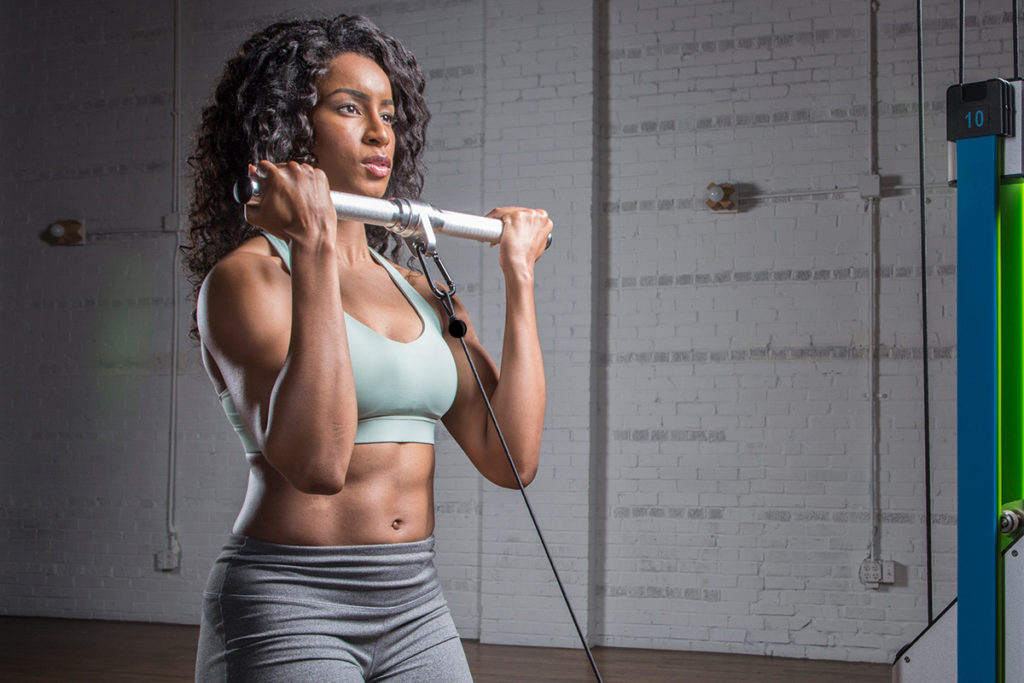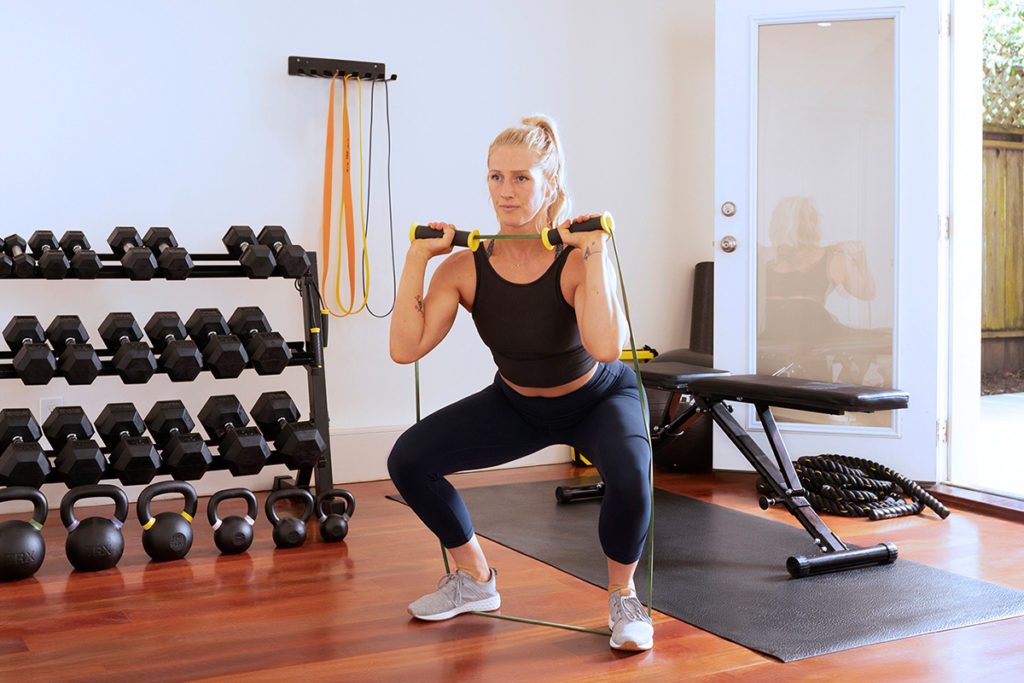Sponsored Content
Portable Time Under Tension
What does it mean for your home gym?


In 1896, Gustav Gossweiler of Zurich, Switzerland, filed a patent for what he called “a universal gymnastic apparatus” using bands “made of an elastic, resisting material,” marking the birth of resistance bands in home fitness.
A lot has changed since 1896—I mean, who wears suspenders and a tie to the gym anymore?—but Mr. Gossweiler would recognize most of the resistance bands on the market today. Sure, they may be made of silicon or latex nowadays and come in a rainbow of different colors, but modern resistance bands haven’t really changed much since the end of the 19th century. Until now.
The Science of Resistance Band Training—Time Under Tension
Time Under Tension (TUT) stands for the amount of time a muscle is held under strain. It has been utilized by professional athletes and some of the world’s top performance coaches and trainers for years. No one company can lay claim to inventing Time Under Tension; however, making it more portable and convenient for the home gym consumer will address a big void that exists in the market today. One that prioritizes the importance of building functional strength training, prehab and rehab gym capabilities.
There are decades of scientific research studies that speak of the effectiveness of resistance bands. Here are just a few:
Explosive Resistance Training Using Elastic Bands in Young Female Team Handball Players (2018)
A Comparison of the Effects of Three Strength Training Programs on Women (1990)
New Developments in Time Under Tension Technology
Given their ability to be used on different types of home gym equipment, recent advancements in resistance band technology are exciting. By using resistance bands rather than traditional metal weights or bulky home gyms, one can still target every muscle group, but without the added pressure to joints or tendons. This both optimizes workouts and raises the bar for personal home gyms.
With more and more people working from home, it’s encouraging to see these developments. It’s now possible to get a great full-body workout without leaving home, and without taking up a ton of space. If resistance bands are able to replace bulky, heavy weights by offering up to 200 lbs of resistance, then home workouts can be an excellent substitute for going to the gym, or at least a way to supplement your weekly routine. Not only are home workouts becoming more accessible, but the equipment is taking up much less space. This is great news for city dwellers in smaller apartments.
Because resistance bands hold muscles in tension on both the up and down motion of an exercise, they maximize the amount of cardio benefit and pack in more caloric burn in the same amount of workout time. In addition, the smooth motion of resistance bands puts less pressure on joints and tendons and results in fewer injuries.
Mitch Maladrino from Trainerize notes, “Swapping out traditional metal plates with lightweight resistance band equipment can generate significant strength and muscle gains, and the ability to provide constant tension and resistance throughout the entire range of motion. This is pretty exciting stuff and quite frankly long overdue. Even with all the advancements in Digital Fitness, it’s refreshing to see basic strength and mobility modalites being followed to make the fitness equipment we buy in the future more functional, portable and performance packed, all the while being affordable.”
Time Under Tension (resistance band) provides constant load to the muscles through the entire movement, resulting in a higher caloric burn without pressure to the joints and fewer injuries. The TUT Trainer home gym weighs 11.6 lbs with quick and easy assembly/disassembly. It’s portable and easily set up to attach to any wall or doorframe. It also has an app that will guide the user through multiple exercises and/or multiple training regimens. Learn more at: https://www.ideafit.com/product/gear-minute/time-under-tension/





